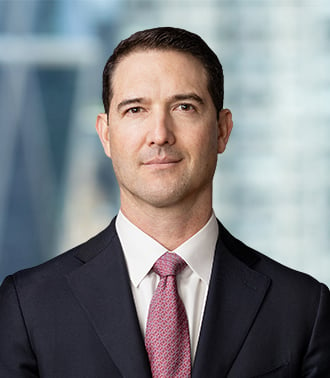Superfund Liability for PFAS: EPA Designates Two PFAS Chemicals as Hazardous Substances
Today, the Environmental Protection Agency (EPA) officially designated two PFAS chemicals as hazardous substances under the Comprehensive Environmental Response, Compensation and Liability Act (CERCLA or Superfund). This step was first announced in EPA’s October 2021 PFAS Strategic Roadmap — an outline of the overarching plans of the Biden Administration to address PFAS-related concerns.
Today, EPA released a final rule designating two PFAS legacy chemicals, perfluorooctanoic acid (PFOA) and perfluorooctanesulfonic acid (PFOS), as hazardous substances because, according to EPA, “significant scientific evidence [suggests] these substances, when released into the environment, may present a substantial danger to public health or welfare or the environment.” Today’s action may expose a wide range of industries to potential Superfund cleanup liability for releases of PFOA and PFOS, from manufacturers, to users and processors, to waste water treatment facilities. This action also comes on the heels of EPA’s release of its Final National Primary Drinking Water Regulation for the same two substances and four other PFAS.
The CERCLA rulemaking carries several significant implications: for example, it requires companies to report PFOA and PFOS releases of one pound or more in a 24-hour period. The rule also authorizes EPA to order investigations and cleanups of PFOA and PFOS and to recover such costs from potentially responsible parties. Private parties that conduct cleanups consistent with the National Contingency Plan may also seek recovery of cleanup costs associated with PFOA and PFOS from potentially responsible parties. Similarly, parties that reimburse costs of PFOA and PFOS cleanups may be able to seek contribution from other responsible parties. The rule is also significant because it could require a party to revise or expand a previous risk assessment during the five-year review process.
In addition, the rule requires federal entities that transfer or sell property to provide notice about the storage, release, or disposal of PFOA or PFOS on the property and to guarantee that any PFOA or PFOS contamination has been cleaned up or, if needed, that additional cleanup will occur in the future. The rule will also trigger the Department of Transportation to list and regulate these two substances as hazardous materials under the Hazardous Materials Transportation Act.
In an apparent attempt to temper the potentially far-reaching consequences of the rule, EPA has also issued a CERCLA PFAS enforcement discretion and settlement policy. The policy describes how EPA will focus its enforcement on parties who “significantly contributed” to the release of PFAS chemicals into the environment, including parties that have manufactured PFAS or used PFAS in the manufacturing process, federal facilities, and other industrial parties. The policy states that EPA “does not intend to pursue entities where equitable factors do not support seeking response actions or costs under CERCLA,” including farmers, municipal landfills, water utilities, municipal airports, and local fire departments.
This rulemaking marks the first time that EPA has designated a material as a hazardous substance directly under CERCLA. All previously designated substances are listed under CERCLA because they were deemed hazardous under other environmental statutes such as the Resources Conservation and Recovery Act, the Clean Water Act, and the Clean Air Act.
Our team will continue to follow and report on developments in this area, including any litigation challenging today’s action, as well as any moves by EPA to designate other PFAS chemicals as hazardous substances under CERCLA and EPA’s ongoing efforts to vigorously implement as many features of the PFAS Strategic Roadmap as possible during this election year. Please feel free to reach out to any of us or your Arnold & Porter contacts for further information.
© Arnold & Porter Kaye Scholer LLP 2024 All Rights Reserved. This blog post is intended to be a general summary of the law and does not constitute legal advice. You should consult with counsel to determine applicable legal requirements in a specific fact situation.







